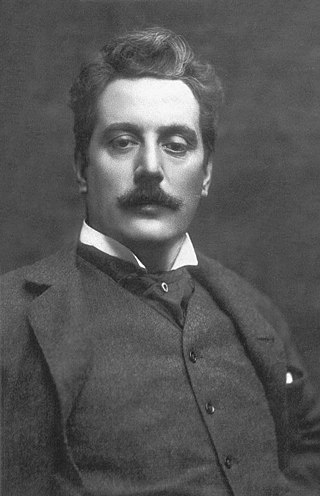
Giacomo Puccini was an Italian composer known primarily for his operas. Regarded as the greatest and most successful proponent of Italian opera after Verdi, he was descended from a long line of composers, stemming from the late-Baroque era. Though his early work was firmly rooted in traditional late-19th-century Romantic Italian opera, he later developed his work in the realistic verismo style, of which he became one of the leading exponents.
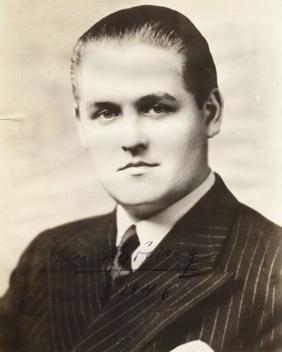
Johan Jonatan "Jussi" Björling was a Swedish tenor. One of the leading operatic singers of the 20th century, Björling appeared for many years at the Metropolitan Opera in New York City and less frequently at the major European opera houses, including the Royal Opera House in London and La Scala in Milan. He sang the Italian, French and Russian opera repertory with taste.
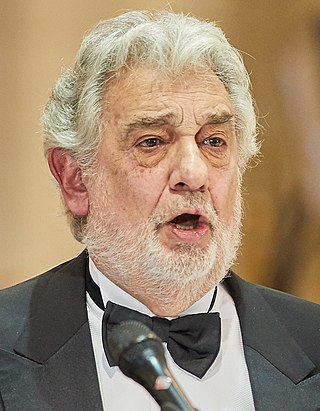
José Plácido Domingo Embil is a Spanish opera singer, conductor, and arts administrator. He has recorded over a hundred complete operas and is well known for his versatility, regularly performing in Italian, French, German, Spanish, English and Russian in the most prestigious opera houses in the world. Although primarily a lirico-spinto tenor for most of his career, especially popular for his Cavaradossi, Hoffmann, Don José and Canio, he quickly moved into more dramatic roles, becoming the most acclaimed Otello of his generation. In the early 2010s, he transitioned from the tenor repertory into exclusively baritone parts, most notably Simon Boccanegra. As of 2020, he has performed 151 different roles.

Mario Del Monaco was an Italian operatic tenor.
The Great Caruso is a 1951 biographical film produced by Metro-Goldwyn-Mayer and starring Mario Lanza as famous operatic tenor Enrico Caruso. The movie was directed by Richard Thorpe and produced by Joe Pasternak with Jesse L. Lasky as associate producer. The screenplay, by Sonya Levien and William Ludwig, was suggested by the biography Enrico Caruso His Life and Death by Dorothy Caruso, the tenor's widow. The original music was composed and arranged by Johnny Green and the cinematography by Joseph Ruttenberg. Costume design was by Helen Rose and Gile Steele.
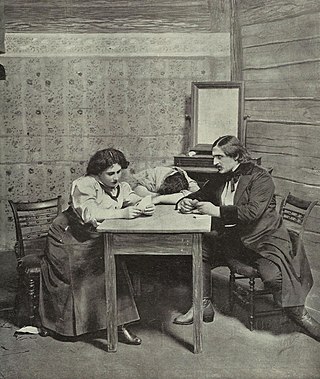
La fanciulla del West is an opera in three acts by Giacomo Puccini to an Italian libretto by Guelfo Civinini and Carlo Zangarini, based on the 1905 play The Girl of the Golden West by the American author David Belasco. Fanciulla followed Madama Butterfly, which was also based on a Belasco play. The opera has fewer of the show-stopping highlights that characterize Puccini's other works, but is admired for its impressive orchestration and for a score that is more melodically integrated than is typical of his previous work. Fanciulla displays influences from composers Claude Debussy and Richard Strauss, without being in any way imitative. Similarities between the libretto and the work of Richard Wagner have also been found though some attribute this more to the original plot of the play, and have asserted that the opera remains quintessentially Italian.
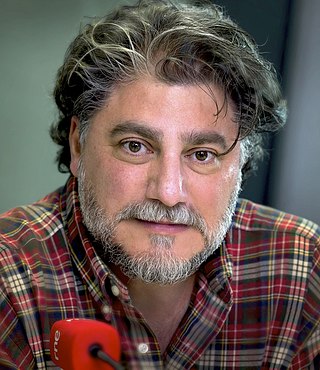
José Luis Victor Cura Gómez is an Argentine operatic tenor, conductor, director, scenographer and photographer known for intense and original interpretations of opera characters, notably Otello in Verdi’s Otello, Samson in Saint-Saëns’ Samson et Dalila, Canio in Ruggero Leoncavallo's Pagliacci, Stiffelio in Giuseppe Verdi's Stiffelio and many others.

Eleanor Steber was an American operatic soprano. Steber is noted as one of the first major opera stars to have achieved the highest success with training and a career based in the United States.
"Che gelida manina" is a tenor aria from the first act of Giacomo Puccini's opera, La bohème. The aria is sung by Rodolfo to Mimì when they first meet. In the aria he tells her of his life as a poet, and ends by asking her to tell him more about her life. It is one of the most recorded arias by tenors.

Charles Anthony Caruso, better known by his stage name of Charles Anthony, was an American actor and tenor noted for his portrayal of comprimario characters in opera. Anthony had the distinction of appearing in more performances at the Metropolitan Opera than any other performer. He celebrated his fiftieth anniversary with the company in 2004, and gave his farewell in the role of the aged Emperor Altoum in Turandot, at the Met, on January 28, 2010.

Joan Pons Álvarez is a Spanish operatic baritone, known internationally as Juan Pons. He is most famous for his Verdi roles.

Daniele Barioni was an Italian opera singer who had a prolific career during the 1950s through the 1970s. Early on in his career he rose to fame as a leading tenor at the Metropolitan Opera between 1956 and 1962. Afterwards he worked primarily in opera houses and concerts throughout the United States, although he did make numerous appearances in both Europe and South America as well. Barioni was particularly associated with the operas of Giacomo Puccini and the roles of Turiddu in Pietro Mascagni's Cavalleria rusticana and Alfredo in Giuseppe Verdi's La traviata.
Roy Cornelius Smith is an American operatic tenor, from Big Stone Gap, Virginia.
Antonio Cortis was a Spanish tenor with an outstanding voice. He was acclaimed by audiences on both sides of the Atlantic for his exciting performances of Italian operatic works, especially those by Giuseppe Verdi, Giacomo Puccini and the verismo composers.

Aria: The Opera Album is Italian tenor Andrea Bocelli's fourth studio album, released in April 1998.
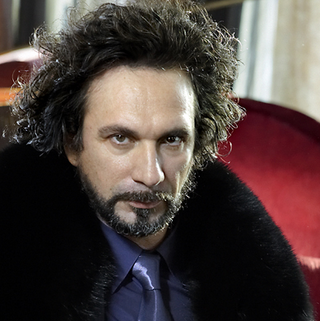
Fabio Armiliato is an Italian operatic tenor.

Rosario La Spina is an Australian operatic tenor who has had an active international career since the early 2000s. He has worked with many leading opera houses and orchestras, singing under such conductors as Renato Palumbo, Bruno Bartoletti, Gary Bertini, Daniele Callegari and Richard Hickox. Since 2005, he has been particularly active with Opera Australia.

Carolina White was an American operatic soprano who had an active performance career during the first three decades of the 20th century. After beginning her career as a concert soprano in Boston in 1905, she went to Europe where she established herself as a leading soprano in Italy and Switzerland, beginning at the Teatro di San Carlo in 1908. After appearing in major opera houses like La Scala and La Fenice, White left Europe in 1910 to join the roster of artists at the Chicago Grand Opera Company where she was a leading soprano through 1914. After this she was active primarily as a concert soprano up through 1922. She made several recordings for Columbia Records during the second decade of the 20th century.
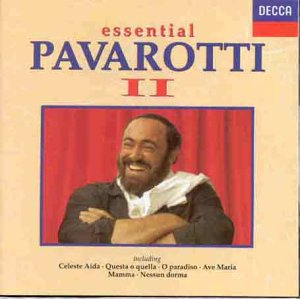
Essential Pavarotti II is an album by tenor Luciano Pavarotti. It was released in 1991 by Decca Records and peaked at number one on the UK Albums Chart. In doing so it duplicated its predecessor and became the second classical album to achieve this.
"O soave fanciulla" is a romantic duet from the first act of Giacomo Puccini's 1896 opera La bohème. It is sung as the closing number in act 1 by Rodolfo (tenor) and Mimì (soprano) where they realise they have fallen for each other.
















